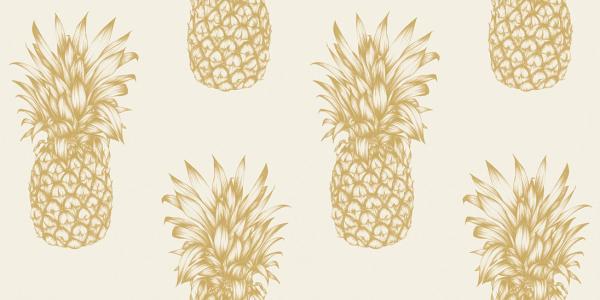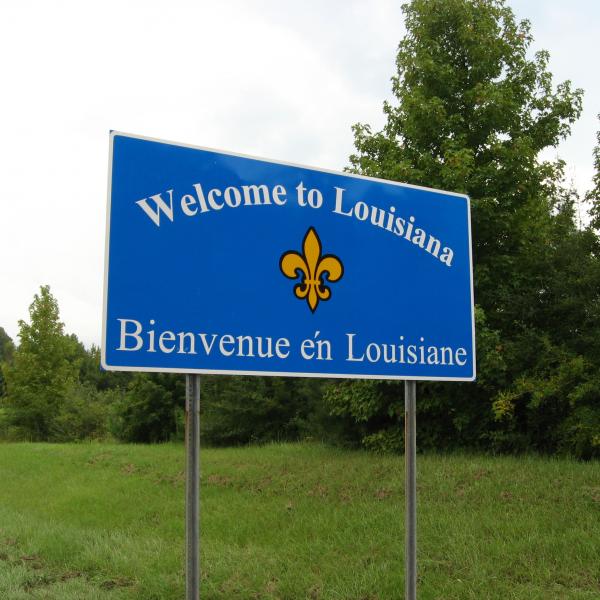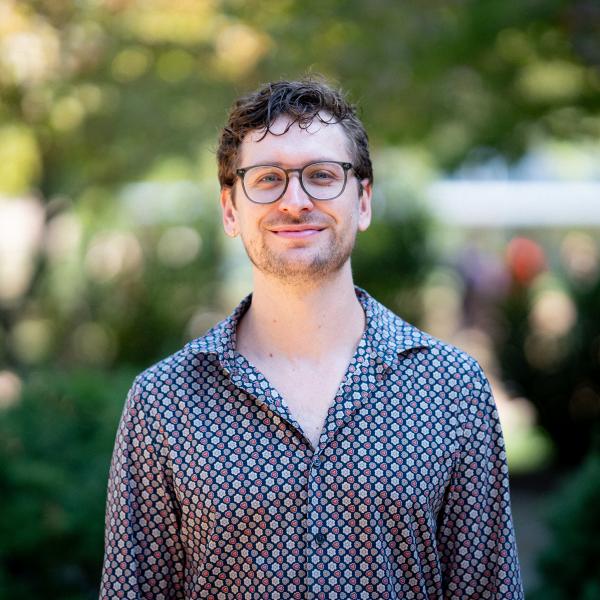Historian William Kelly joins the Center for the Humanities for 2021–22 as an Emerging Voices Fellow, funded by a program from the American Council of Learned Societies (ACLS) that supports recent PhDs in the humanities and humanistic social sciences. Specifically, the competitively awarded fellowship seeks to identify and assist a vanguard of scholars whose voices, perspectives and broad visions will strengthen institutions of higher education and humanistic disciplines in the years to come. Kelly, who is one of 48 new Emerging Voices Fellows for 2021, will work closely with the Divided City initiative. He earned a PhD in history with a focus on Latin American and Caribbean history from Rutgers University in 2021.
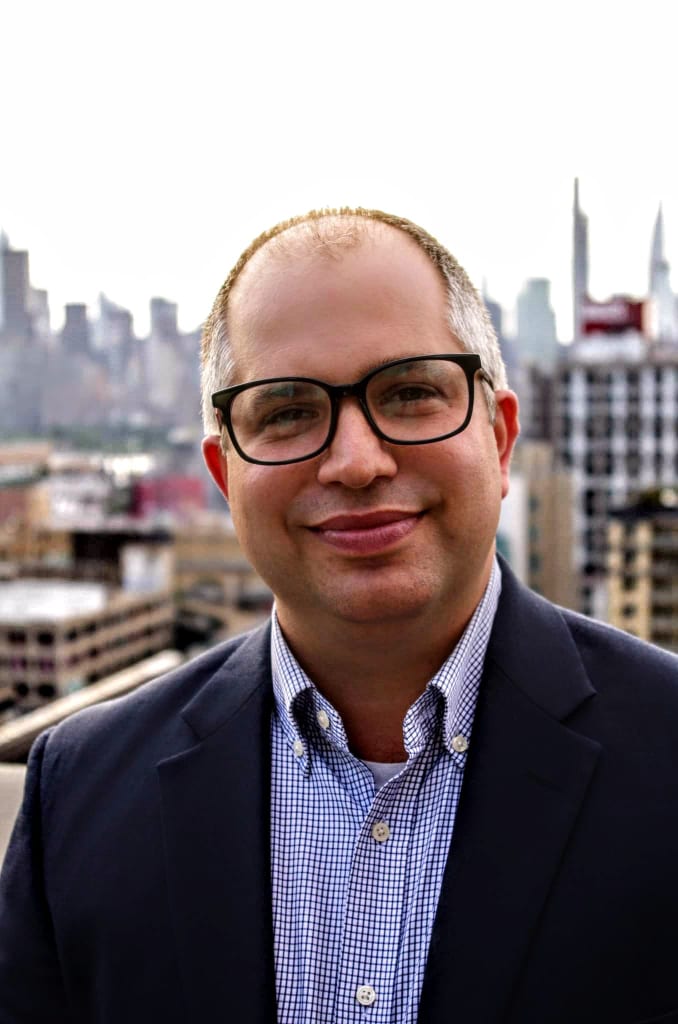
Tell us a bit about yourself! Where did you grow up? What do you like to do/read/explore outside of your research?
I was born in Massachusetts but my family relocated to Florida when I was five, so I grew up in the Tampa Bay area, near Clearwater. My mom was born in Manhattan and grew up in Connecticut and my dad spent his life in the Boston area, so despite growing up in Florida I had a lot of northern influences, especially around food. My mom seemed to be able to find every Brooklyn Italian ex-pat who moved to Florida to open a pizzeria, so I grew up with a real appreciation for quality Italian-American food, but also all of the Greek and Latin American food I was surrounded by (Tampa Bay is home to one of the country’s largest Greek communities in Tarpon Springs), and also New England-style seafood. We never traveled when I was a kid but I heard a lot of stories about my mom’s family (her parents grew up in NYC) and her own experiences there staying with her grandparents in the city as a child and roaming Greenwich Village as a teenager in the early ’60s. So when I graduated from the University of South Florida in 2005 I moved north, first to Washington, DC, then to Chicago, and finally to NYC, where I have lived since 2013.
My favorite thing to do in my free time is explore cityscapes. I walk a lot, and I mean a lot — I regularly map out 20-25 mile walks that take me through different parts of NYC; for example, walking Manhattan tip-to-tip from north to south, or all of Queens from Flushing in the north to Rockaway Beach in the south. I am fascinated by the heterogeneity of the city — culturally, linguistically, geographically. I love neighborhoods like Jackson Heights, Queens, where you can move seamlessly between completely different cultural contexts simply by walking down the street. When we lived in Cuba, my wife and I would regularly put our daughter in her stroller (she was 15 months when we moved to the island) and go on miles-long walks through the cities we lived in. For me, walking a city is by far the best way to start to make sense of its uniqueness and culture, and all its constituent parts. I love it.
When you finished your undergraduate degree, you taught in public schools for several years. What did you make of that experience – what did you learn, how did it shape you as a scholar, what do you remember most?
The biggest thing I took away from my years of teaching in Washington, DC was a racial consciousness. I grew up in poverty. My dad didn’t work and my mom didn’t graduate from high school. She supported our family with what she was able to earn in low-wage jobs, but we went through several evictions and I have plenty of memories of helping my mom scrounge up change so she could put gas in the car or pick up some dinner. So when I started teaching in low-income, almost-exclusively Black schools in Washington, DC, I thought I was going to understand where my students were coming from. And what I learned very quickly was that I absolutely did not. I had some common ground, but as a white person I had obviously never experienced institutional racism in any form. I had also never experienced violence the way they had, or personal loss. None of my classmates died when I was in high school; meanwhile, I went to four funerals in my first two years teaching in a school of 250 students. So that was the beginning of my real internalization of racial inequality, and particularly of the relationship between race and space and the racism inherent in how many of our cities and institutions are structured. And those realizations have really undergirded my intellectual formation.
Tell us about the Chicago Cuba Project, which you founded and led presumably while earning your master’s degree at the University of Chicago?
I actually founded the Chicago Cuba Project, which was an oral history project dedicated to documenting the history of the Chicago-area Cuban émigré community, just after I graduated from UChicago. I ran it for two years before I had to discontinue it when I moved to NYC to start my PhD. I started studying Cuba as an undergraduate anthropology major when I conducted a short-term ethnographic project there in 2004, and I continued working on Cuba when I started grad school in Chicago. Chicago is and has been historically a city of immigrants — it’s home to the country’s second-largest Mexican community, for example — but something that struck me was that as we explored new neighborhoods, I was encountering a lot of material evidence of a Cuban community there — Cuban restaurants, Cuban products in corner stores, that sort of thing — but I wasn’t really encountering Cuban people. So I started wondering why, and when I began to look into it, I learned that Chicago in the 1960s was a primary Cuban migration site, especially for working-class Cubans who came to the city to work in manufacturing and other industries. And so the project sort of took off from there, with me trying to seek these people out and find out who they were, what their experiences had been, how coming to Chicago specifically (as opposed to Miami, for example) had shaped their experiences as émigrés.
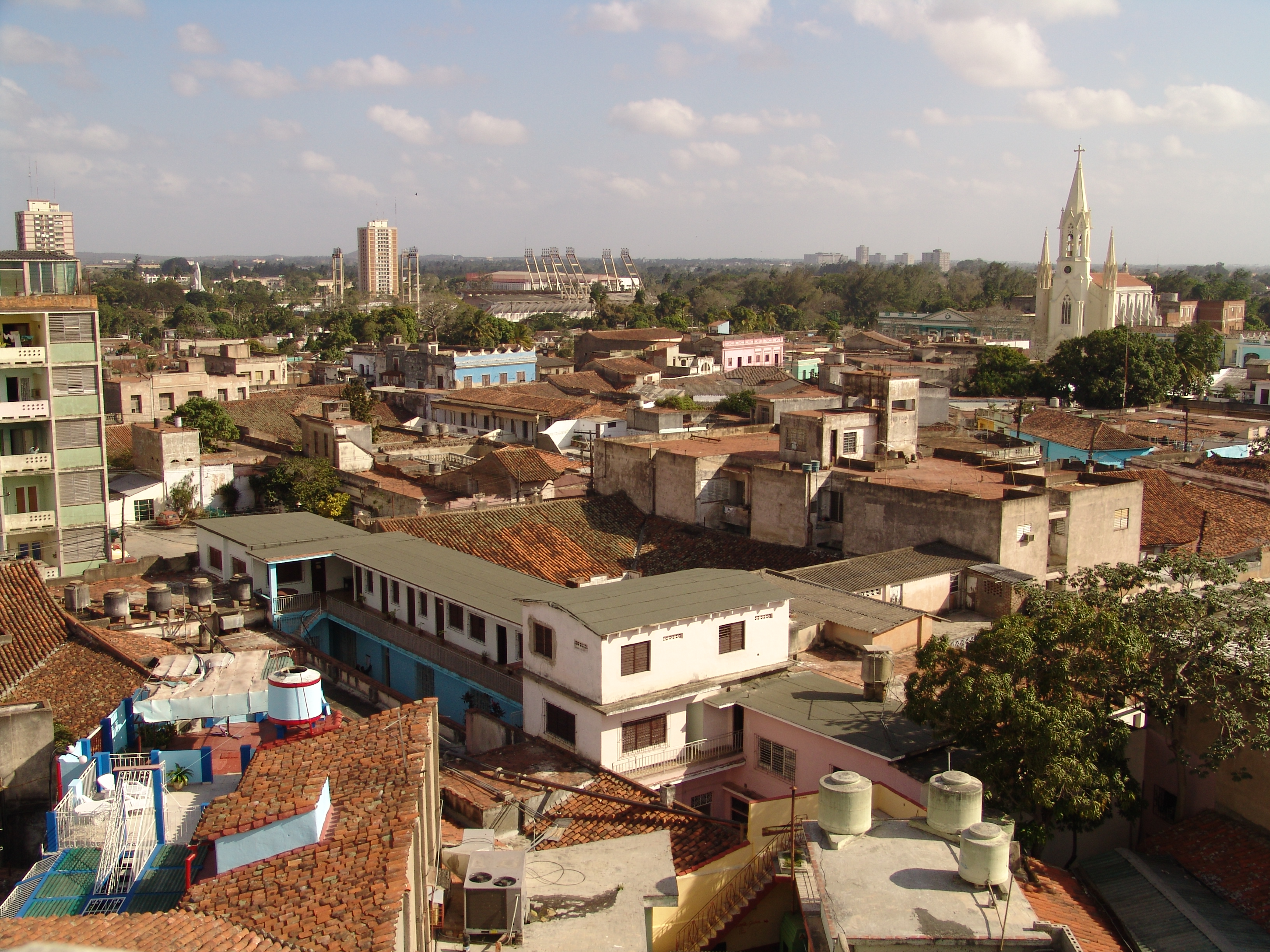
How does your current research and scholarly interests tie together these experiences?
Growing up with a lot of material uncertainty, particularly housing insecurity, I was always drawn to the Cuban Revolution because, rhetorically, it was a social project based on the ideas of equality and basic human dignity. So it makes sense that I was drawn to revolutionary urban housing policy, as it was based on the idea that housing was a human right. And as I moved into my archival research and started to piece together the history of urban housing from the ground up, I think that the lessons I learned about structural racism as a teacher in DC let me see beyond the racially equalizing rhetoric of the revolutionary state. As a teacher I had already begun to think of cities as divided spaces where space itself contributes to and exacerbates racial and socioeconomic inequality. And so that helped me begin to understand the social geography of Cuban cities and how, despite the socialist project, in many ways we see similar sorts of dynamics of inequality there as we see in cities in the United States and elsewhere.
Your dissertation explores urban housing struggles, everyday life, and revolution in Cuba in the 1960s, ’70s and ’80s. You spent a lot of time doing archival research in Cuba, supported by a CLIR Mellon Fellowship for Dissertation Research in Original Sources. Do you have a favorite “from the archives” story?
That’s a tough one because I have so many. I spent a year and a half in Cuba while I was doing my PhD, most of it over 13 months with my wife and daughter from 2016 to 2017. Archives in Cuba are restricted and for the most part collections are limited to pre-revolutionary sources or published government documents; you don’t really find the kinds of collections of personal correspondence and private papers you typically encounter in other places. Since I wanted to study daily life after 1959 though, I decided to try my luck in the municipal and provincial archives where researchers hadn’t really looked yet, to see if I could find new kinds of sources. The first time I realized I was going to be able to do the project that I wanted to was in Camagüey, which is Cuba’s third-largest city. There I found a treasure trove of documentation related to the People’s Power, which since 1976 has been Cuba’s legislative branch of government; it operates at the neighborhood, city, province, and state levels. The neighborhood-level meetings happen every few months and are basically large town hall meetings, where the residents of the neighborhood come to air their grievances. In Camagüey, they had preserved in the provincial archive the meeting minutes for every neighborhood-level meeting of the People’s Power that took place from the time of its founding until 1980, and they had also preserved correspondence between ordinary citizens and their local representatives. These kinds of documents aren’t available to researchers anywhere else in Cuba, and before I found them I would have told you that access to them was completely restricted everywhere. The first time I sat with the collection and began to read these letters written by actual citizens about things like housing collapses, for example, or their interactions with state-sponsored demolition brigades, I knew I had stumbled upon something unique that was going to let me tell an entirely new history of the Revolution. So that was a really exciting day.
You wrote a piece published by the Washington Post in November 2020 on support for Trump among young Cuban Americans. What reactions did you get? Was there anything that readers missed or misunderstood?
There is a dichotomy in the way most people see Cuba, or really anything related to Cuban or exile politics — either Cuba is a brutal North Korea-style dictatorship or a socialist utopia whose only problem is the US embargo. There tends not to be much middle ground there. This is actually what drew me to study Cuba in the first place; as a kid growing up in Florida, Cuba was always in the conversation, and as an outsider it always seemed impossible to me that either of these absolutist positions could really reflect the reality of life on the island. So I grew up with a lot of curiosity about this place that was so geographically close but that it seemed like no one really understood. That ideological lens through which most people understand Cuba really blurs our vision and makes it hard to understand things that don’t quite fit. And that was the frustration that led me to write the Washington Post piece. I saw that most people were trying to interpret Trump’s popularity among Cuban Americans through this lens — Cuban Americans are mostly anti-Communist Republicans so of course they like Trump — but that didn’t explain why younger Cuban Americans, who aren’t ideologically opposed to things like universal health care, for example, would support him. And to me the answer was obviously rooted in Cuban history, in the specific historical path of the revolutionary project itself. And so that’s what the piece was about.
I would say that the reactions I received were generally positive, but there were certainly a fair number of people who interpreted the piece through the same dichotomous lens that I described above — so people on the left were angry that I argued that the revolutionary project has broadly failed to bring forth the positive social change its architects promised, and people on the right were angry that I described the many tangible social goods that the project has produced over the years. Which is fine. I learned a long time ago that if you’re going to talk about Cuba publicly, you’re going to make a lot of people angry, no matter what you say. But others are going to take a step back and say, “Huh, that’s a perspective I hadn’t really thought about before.” And that’s the goal, really.
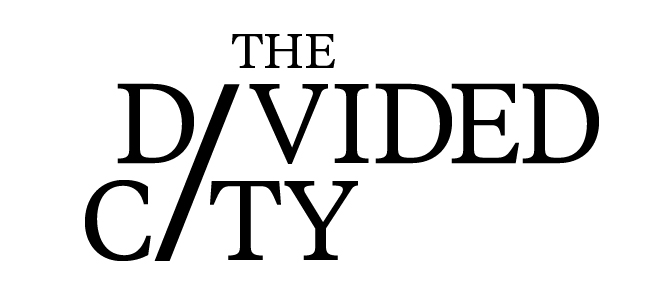
What are you most looking forward to in joining WashU and the Divided City initiative this year?
I am so excited to join the Divided City initiative. For one thing, I’m really looking forward to working among an interdisciplinary community of scholars who are thinking deeply about urbanism and racial inequality in a global context, especially as I am working on my book manuscript and delving into the comparative aspects of my project. The Divided City initiative is one of the very few spaces within the academy that is dedicated to fostering dialogue between humanities scholars and architects. That makes it an ideal space for me, as my own history of urbanism in Cuba is really a microcosm of exactly that sort of dialogue. What I mean by that is, I’m writing an institutional history in many ways, one that revolves around the legal and governmental structures the revolutionary state created to managed housing. And to do that I’m drawing very heavily on a large corpus of work that Cuban architects and urban planners have produced since 1959. But I’m writing this history from the perspective of ordinary people, particularly those most disenfranchised, predominantly Afro-Cuban citizens who for various reasons have benefitted the least from revolutionary housing reforms. So the institutional history frames the narrative, but the story I’m telling is really about how Cubans have experienced these institutions, how they have been personally impacted by them. I’m really excited to work through these ideas in the company of so many talented scholars at WashU, in a space that was created to promote exactly this sort of interdisciplinary discussion.

